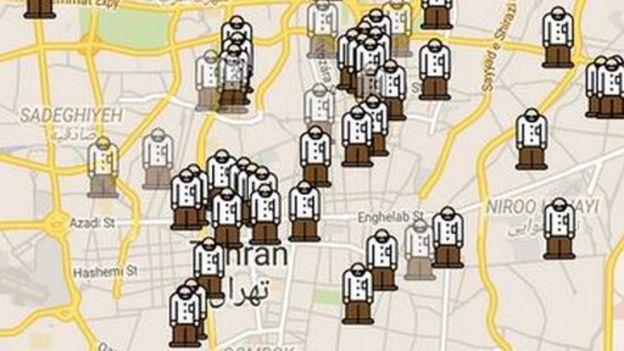BBC Trending: “An anonymous team of Iranian app developers have come up with a solution to help young fashion conscious Iranians avoid the country’s notorious morality police known in Persian as “Ershad” or guidance.
Ershad’s mobile checkpoints which usually consist of a van, a few bearded menand one or two women in black chadors, are deployed in towns across Iran andappear with no notice.
Ershad personnel have a very extensive list of powers ranging from issuing warnings and forcing those they accuse of violating Iran’s Islamic code of conduct, to make a written statement pledging to never do so again, to fines or even prosecuting offenders.
The new phone app which is called “Gershad” (probably meaning get aroundErshad instead of facing them) however, will alert users to checkpoints and helpthem to avoid them by choosing a different route.
The data for the app is crowdsourced. It relies on users to point out the location of the Ershad vans on maps and when a sufficient number of users point out the same point, an alert will show up on the map for other users. When the number decreases, the alert will fade gradually from the map.

In a statement on their web page the app’s developers explain their motives in thisway: “Why do we have to be humiliated for our most obvious right which is the rightto wear what we want? Social media networks and websites are full of footage and photos of innocent women who have been beaten up and dragged on the ground by the Ershad patrol agents.”…
According to the designers of Gershad, in 2014 alone, around three million people were issued with official warnings, 18,000 were prosecuted and more than 200,000 were made to write formal pledges of repentance….
If the app, lives up to the claims made for it, Gershad will be a lifesaver for the growing numbers of young Iranians who are pushing the boundaries of what is allowed and finding themselves on the wrong side of what an Ershad agent sees as acceptable….(More)”


